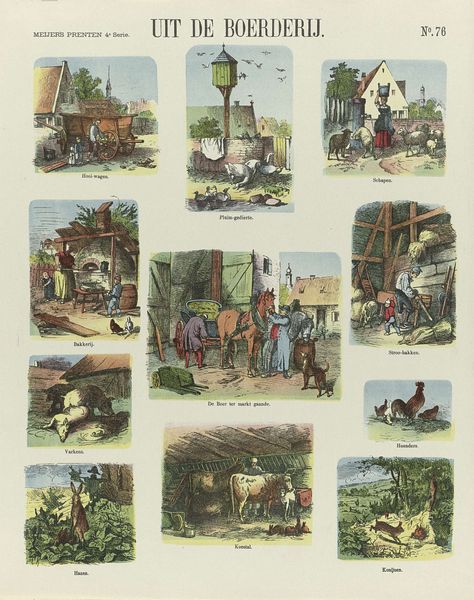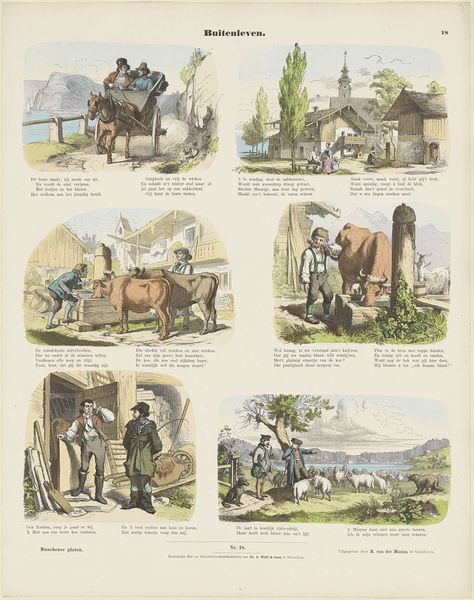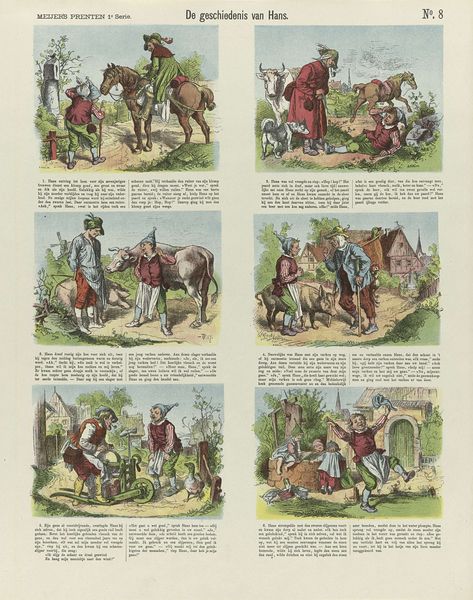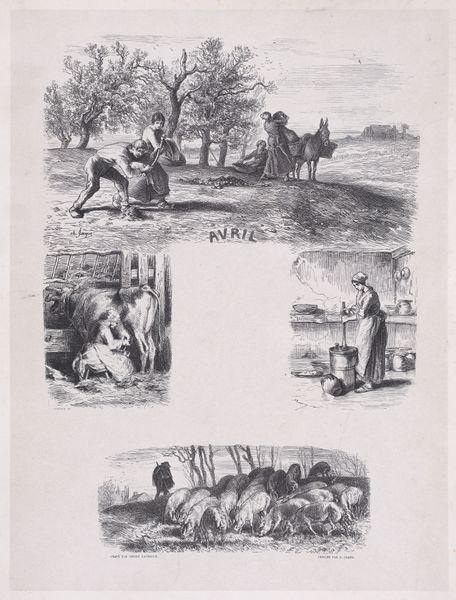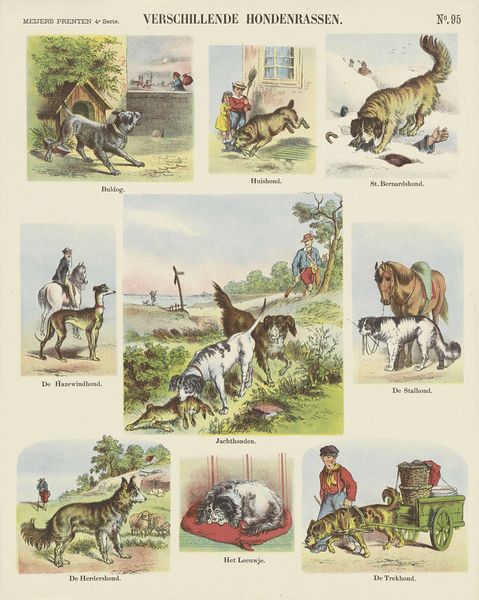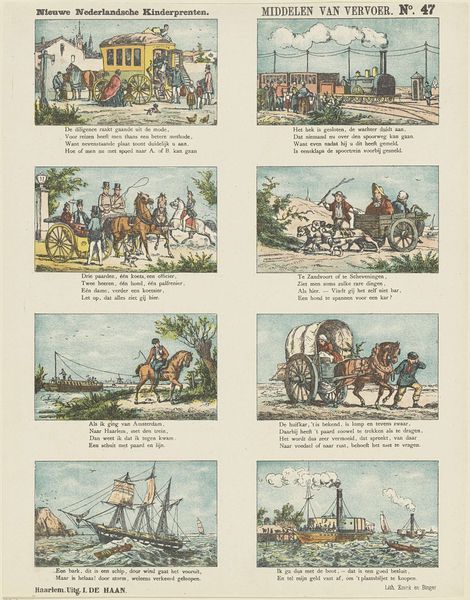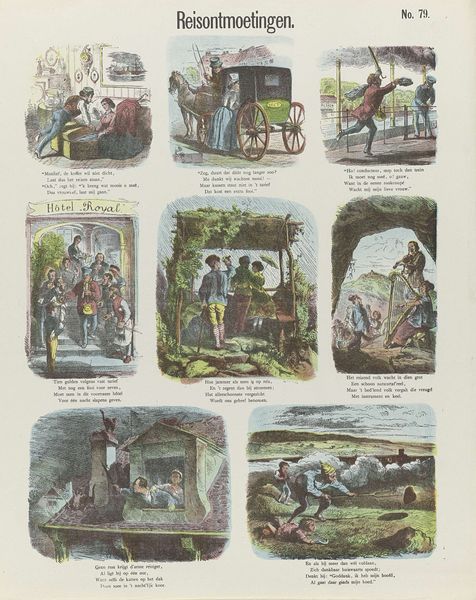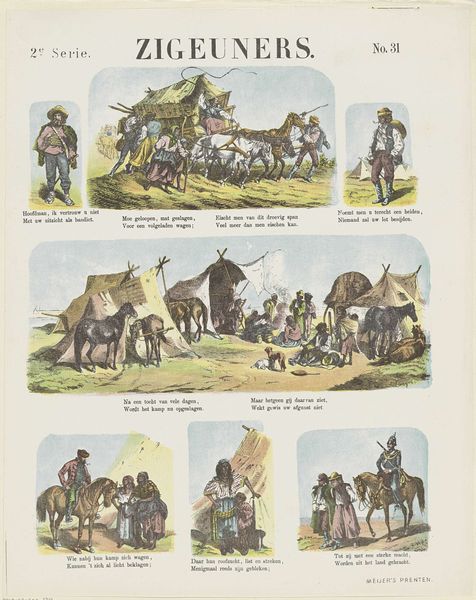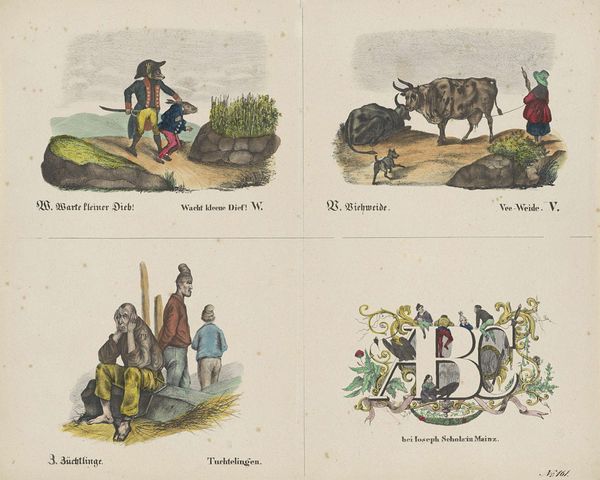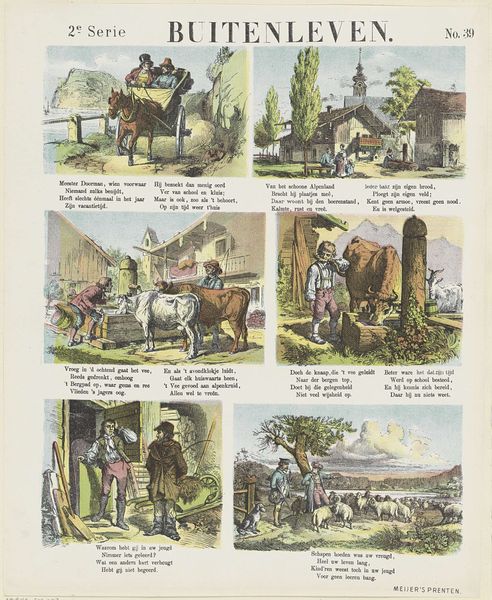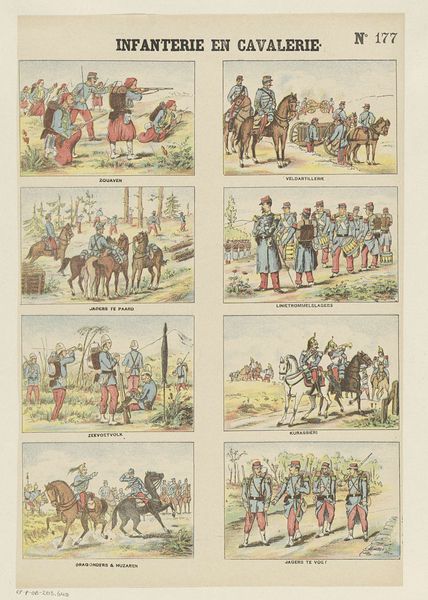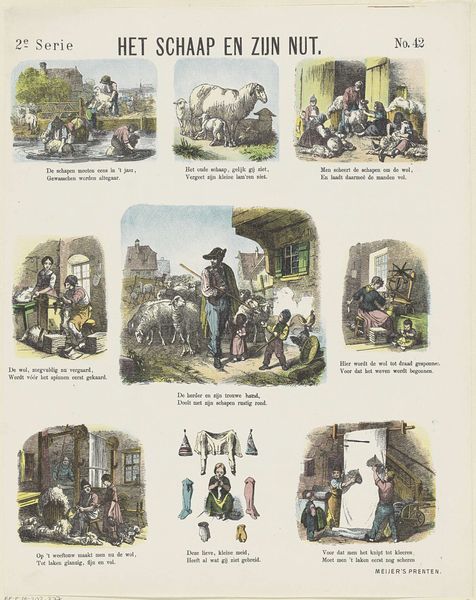
watercolor
#
comic strip sketch
#
imaginative character sketch
#
quirky sketch
#
sketch book
#
landscape
#
personal sketchbook
#
watercolor
#
sketchwork
#
folk-art
#
sketchbook drawing
#
watercolour illustration
#
genre-painting
#
storyboard and sketchbook work
#
sketchbook art
Dimensions: height 429 mm, width 345 mm
Copyright: Rijks Museum: Open Domain
Curator: This illustration, titled "Uit de boerderij," meaning "From the Farm," created in 1878, offers a glimpse into rural life through a series of vignettes. Editor: It strikes me as charming, almost storybook-like. The scenes are self-contained, little worlds of their own, bathed in gentle colors. Curator: Absolutely. Let’s look at the broader context. These prints were likely intended for a wide audience, contributing to a shared visual culture that idealized rural simplicity. Think about the power dynamics represented; observe the roles assigned to people and animals within this structured environment. Editor: I notice how gender roles seem quite traditional: women and children feeding geese, milking cows. How might this portrayal have reinforced or challenged societal norms of the time? And who was this "simplicity" truly for? Did it romanticize a very difficult labor? Curator: Precisely. The representation of labor itself becomes significant. Consider how these images were consumed and their potential role in shaping urban perceptions of the countryside and class. These small drawings could speak volumes regarding the realities—or lack thereof—of Dutch rural life. Editor: What interests me particularly are the small details. It’s tempting to view them as sentimental depictions, but zooming in reveals a structured representation of animal agency as labor alongside the domestic sphere. We can consider these narratives around themes of land, class, and labor, all within the broader social shifts in the 19th century. Curator: It also invites reflections on the function of the images as a possible critique, depending on who the viewer would be. It would speak very differently to farmers than to wealthier consumers, and to women in either social position. Editor: It’s a wonderful testament to the depth you can find, even in seemingly straightforward illustrations. By analyzing historical reception and considering marginalized perspectives, we reveal the complicated relationship of identity, gender, class, and the politics of representation in these seemingly innocent works. Curator: Agreed. Hopefully, visitors will delve into that complexity themselves and challenge the conventional interpretations that shaped art narratives of the late nineteenth century.
Comments
No comments
Be the first to comment and join the conversation on the ultimate creative platform.
